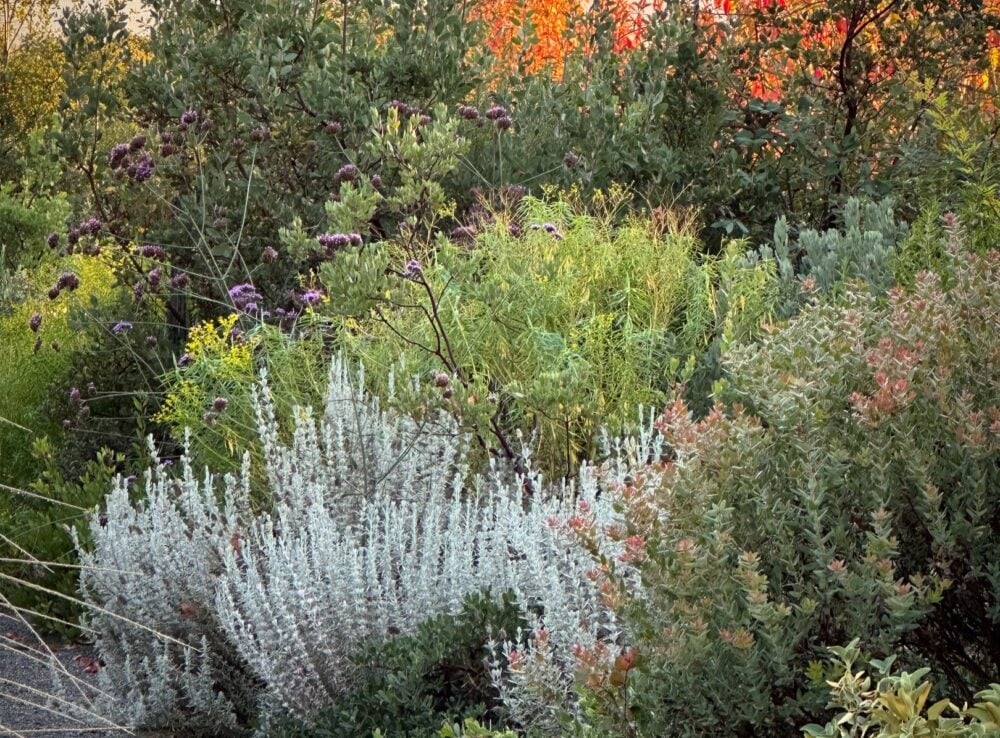
Fantastic Foods Underfoot
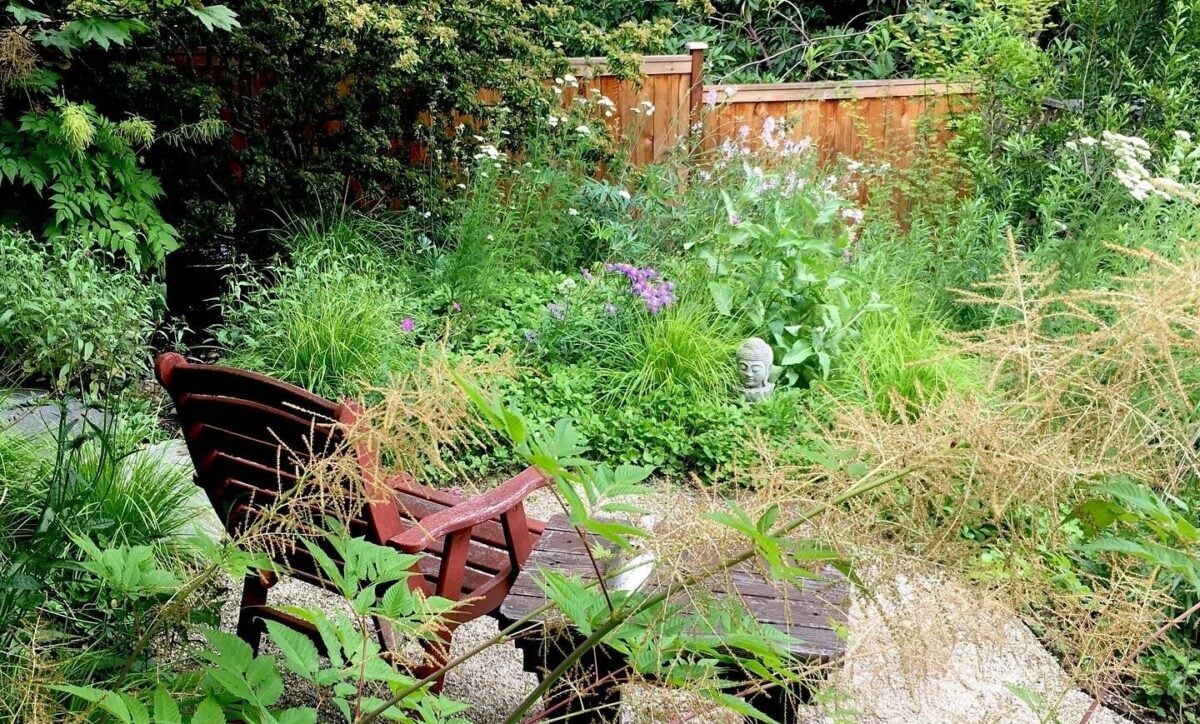
Contributor
Header Image: Photo Credit: Leslie Davis. From: Low Maintenance Gardens – Better for Pollinators and People, Pacific Horticulture, Autumn 2022
Winter 2025
Dash to the front for edible flowers and spices, meander the side yards for succulent baby greens, or saunter to the back for nourishing roots and seeds. These are the activities of a kitchen gardener who practices the art of weaving the landscapes around people into people. One would think that sustaining such abundance requires constant planting and upkeep, but that’s not always the case.
Spontaneous vegetation can supply much of this bounty year-round with little or no effort (Riano 2012).
Whether through twisted irony or evolutionary directive, most weeds that grow around people—in residential properties, commercial complexes, public parks—are not only edible, but more nutrient dense than storebought vegetables. Eating certain weeds can boost personal health, reduce numbers of non-native plants, and lower the environmental costs of growing urban food. Recognizing the usefulness of weeds also helps us become better gardeners.
Hundreds of non-native plants grow in urbanized areas, but not all grow in the same environment. Each has a sweet spot. Learning to identify non-native naturalizing plants helps a gardener identify growing conditions. Understanding weeds help us recognize amounts of sunlight, moisture levels, pH, amount of nutrients, presence of salts, and whether the soil is dense or coarse.
Urban growing conditions, also known as human-influenced landscapes, are unique and deserve special distinction. As opposed to native and wild landscapes, urban landscapes have more nutrients but less airspace, swim in more oxides (C,N,S), have more dust, experience more heat, endure more night light, and lack native herbivore–mesopredator–apex predator relationships. It has been my experience that residential soils, whether intentional or not, also have more moisture. When combined, human influence alters growing conditions and ecologies (Pouyat et al. 2010).
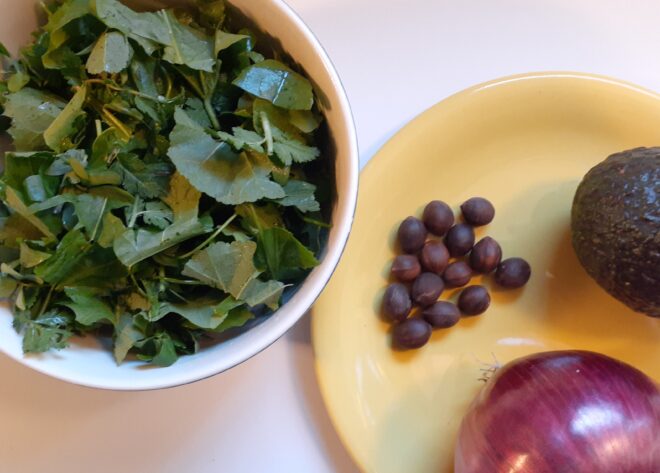
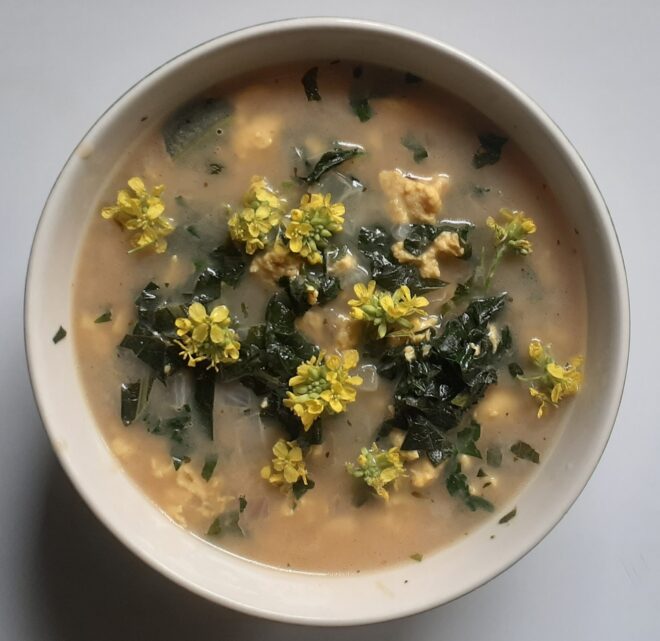
Best practices for neighborhood foraging
While harvesting spontaneous foods is not dangerous, it is not without risk. There are threats, whether digestive, physical, or legal. Below is a quick overview to overcoming many of these hazards.
Eat only what you can identify: Never, ever eat any part of a plant unless that plant has been positively identified as edible. There are poisonous plants that look edible.
Herbicides: Herbicides have been linked to birth defects, learning disabilities, cancer, and premature death. No one should ever knowingly put these toxic chemicals in their body.
An area or plant that has been treated with an herbicide will sit in contrast to an untreated area nearby. Look for straight lines that contrast with nature’s natural whimsy. Look for islands, strips, or unusual or dead vegetation. Never eat foraged greens if you suspect there are toxins in the plant’s surrounding environment. Never forage within 150 feet (45 meters) of a treated area.
Metals: Some urban soils have elevated levels of metals. Some of these metals are neurotoxins, others are carcinogens. Avoid wild foods within 500 feet (150 meters) of industrial areas and highways.
Importantly, always wash urban wild foods in water warmer than the temperature of the plant to ensure that ultrafine particulates are pushed off a leaf, not pulled in. Temperature differences create a pressure differential. Cooler molecules exert a higher pressure and will always flow to warmer molecules, which exert less pressure, ultimately helping to push the particulate off the plant.
That said, plants from residential soils are generally safe to eat. Zoning laws drove toxin-producing industries out of residential areas long ago. Urban gardeners lavish their landscapes with mulches and care. The water residential areas receive is highly processed and purified (Zigas 2011).
Pathogens: If concerned about a plant’s interaction with animals and pathogens, boil it. Taking the food to 165°F (74°C) ensures safety. Flash boiling is a good strategy for plants that rapidly lose their nutrients to heat, such as tender greens. Water boils at 212°F (100°C).
Food Allergies: If it is your first time eating a particular food, follow these protocols. Start by rubbing the plant part around your outer mouth and lips and wait 20 minutes. If there are no reactions, tuck a piece of plant between your gums and cheek and wait 15 minutes. If there are no reactions, swallow a small piece of plant and wait 20 minutes. If there are no reactions, you might not be allergic to that food.
Legal Access: Nobody is going to stop you from harvesting the plants below, but that does not mean it is legal. First and foremost, do not trespass. If caught on private or restricted property while foraging, you may receive criminal charges of trespassing, poaching, or larceny. Stick with your property and that of your acquaintances.
Ten Common Edible Weeds
Cheeseweed (Malva parviflora)
Nearly tasteless, highly nutritious, and abundant, cheeseweed (Malva parviflora) is the everyday treat of foraging. Its leaves, flowers, and fruit are used in salads, smoothies and soups. I prefer the leaves slightly cooked because they are less chewy. Widely available January through August.
Cheeseweed is phototropic, meaning it always tries to face the sun. This tall and lanky annual grows to three feet (91 centimeters) and sometimes as wide. Leaves are alternate and round, with slightly lobed and serrated edges. They are one to four inches (2.5 to 10 centimeters) wide. Hollyhock (Alcea spp.) and geranium (Pelargonium spp.) resemble cheeseweed, but only the former is edible.
Cheeseweed loves full sun and disturbed habitats. It prefers dry, unvegetated, and slightly infertile soils. Its presence may indicate low salts. Look for cheeseweed in the sunny parts of your garden, along trailheads, and lining sidewalks. It will not be found in the wild.
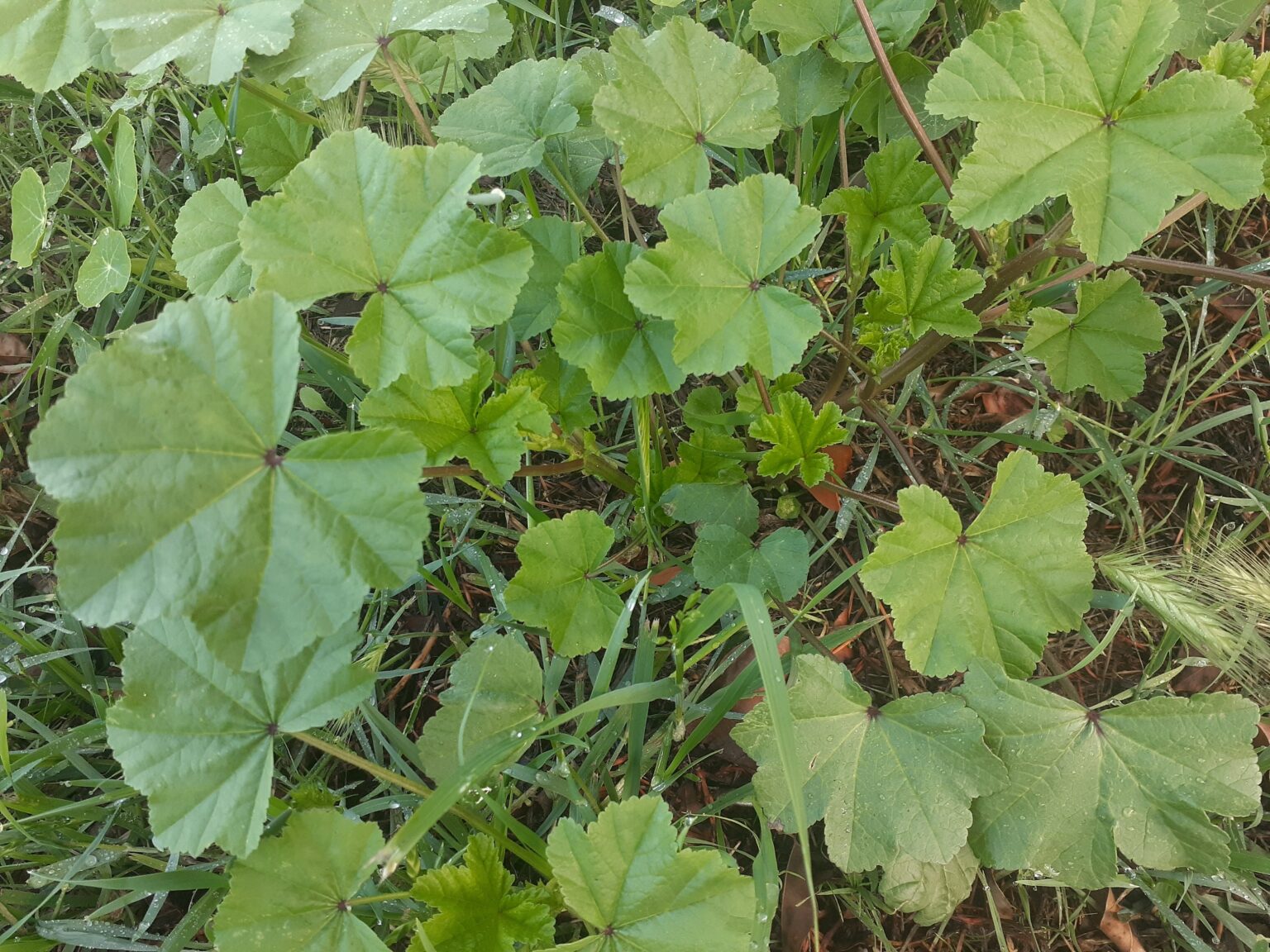
Chickweed (Stellaria media)
Chickweed (Stellaria media) tastes like romaine lettuce with a dash of hay. It is easy to eat by the handful. Flowers, leaves, and seeds are packed with nutrition. I cut and utilize everything four inches (10 centimeters) above its base. This small annual is best eaten raw because of its delicate nature. If chickweed grows in an area that is moist, shady, and frost-free, it can be found year-round. If not irrigated, chickweed is naturally found on the shadier sides of structures between January and July.
This beau tumbles along the ground, growing 3–18 inches (7.6–45.7 centimeters) tall. Small leaves are opposite and oblong with a pronounced point at the end. The plants that most resemble chickweed are petty spurge (Euphorbia peplus) and scarlet pimpernel (Lysimachia arvensis). Petty spurge’s delicate leaf and low growing nature means mistaken identity is common. All Euphorbias are poisonous, and all have skin-irritating milky sap—chickweed does not have milky sap. Scarlet pimpernel is identified by its orange flower, taller growth, and highly ridged (almost square) stems.
Chickweed is typically found on the north and east sides of buildings, walls, and other shaded features. It prefers moist urban soils that aren’t compacted. It may indicate some soil fertility. Chickweed loves a coastal influence, no matter how remote. It is common in the shadow of trees.
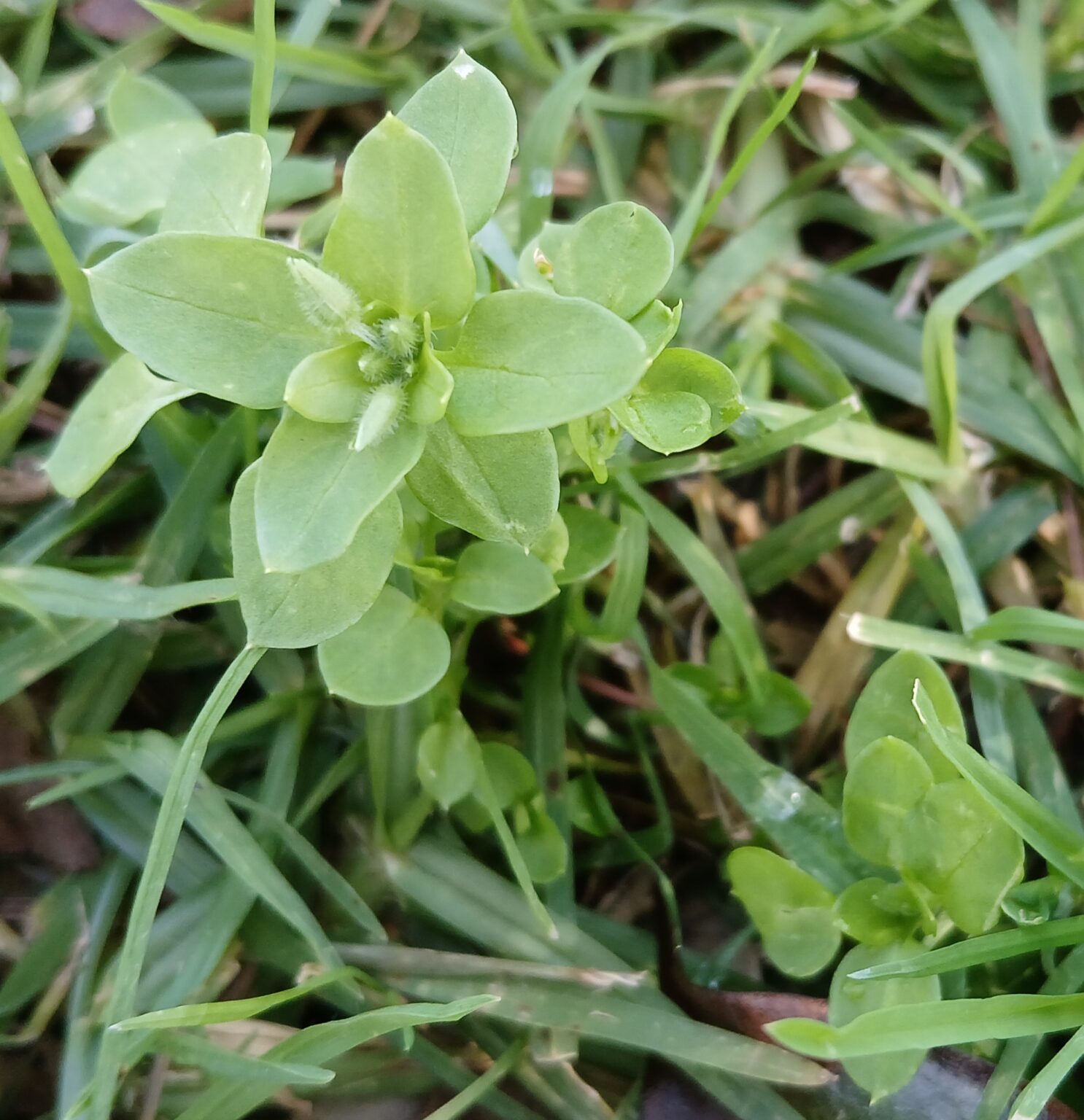
Dock, curly (Rumex crispus)
Moist, lemony, and loaded with nutrition, curly dock (Rumex crispus) has been foraged for centuries. Leaves are eaten raw, boiled, roasted, or steamed. Young leaves are best raw, older leaves lightly cooked. Seeds are also prized and crushed into flour. Midwinter to midspring is the best time of year for tender new leaves. Summer and early fall for seeds.
This clumping perennial is mostly leaves and in the right conditions can create a formidable mass, spreading to two feet (0.6 meters) across. Curly dock is distinguished by its dull green, long elliptical-to-oblong leaf with wavy margins. Its russet flower/seed spikes can get two feet tall. Luckily, the plants that most resemble curly dock are edible. Plantain (Plantago major) has large veins that run parallel to the leaf stem. Wild rhubarb (Rumex hymenosepalus) has a distinct yellow or red stem and bluish leaf with wavy edges. Yerba mansa (Anemopsis californica) has a much thicker leaf than dock and has a bitter fragrance when crushed or torn.
Curly dock prefers urban conditions and indicates moist and slightly acidic soils. It can grow anywhere with moderate moisture and protection from desert and mountaintop extremes. Look for it in the sunnier parts of moist food gardens and public parks.
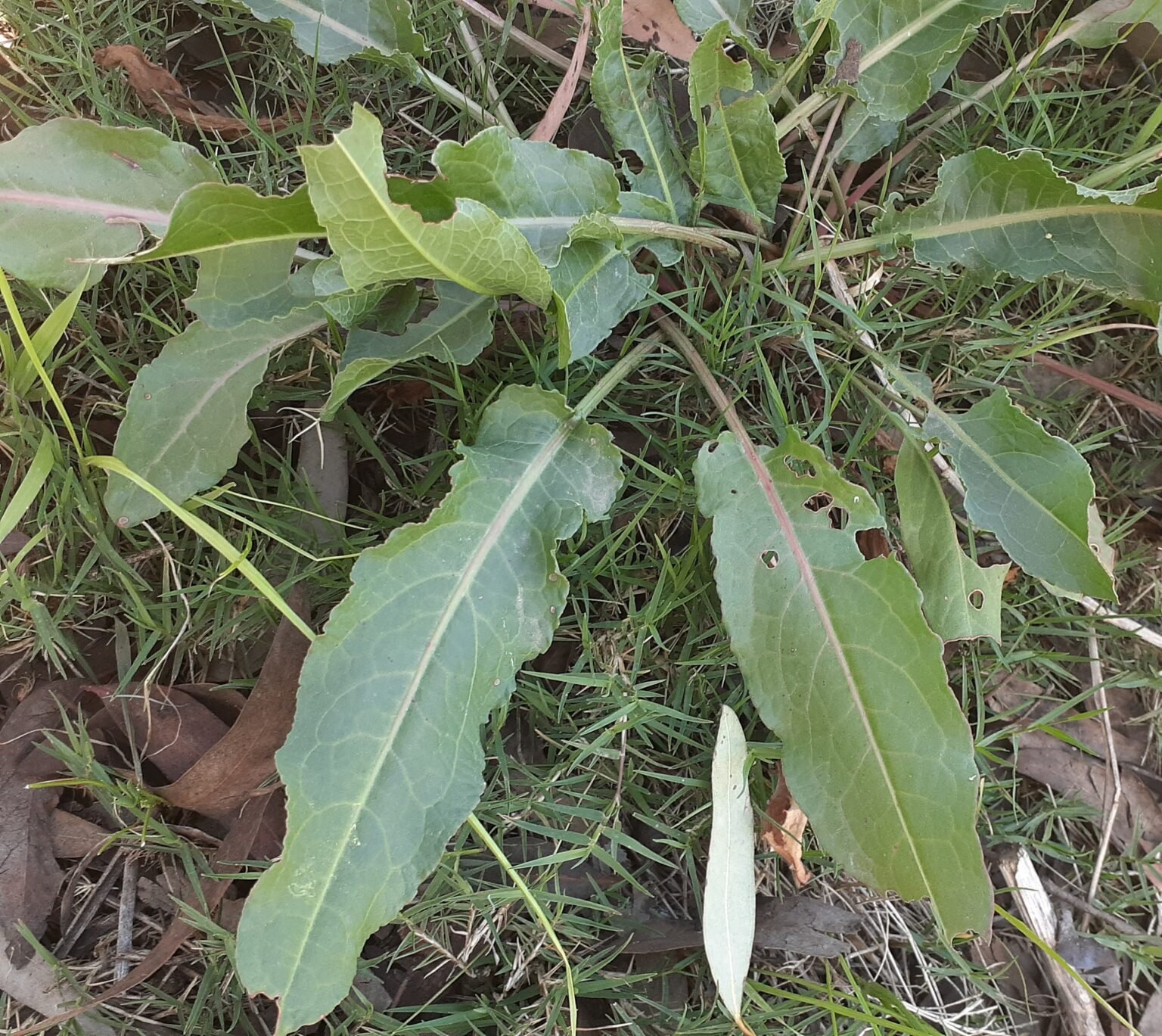
Fennel (Foeniculum vulgare)
Every part of fennel (Foeniculum vulgare) is an adventure—the root, stalk, leaf, flower, and seed all burst with flavor. Anise and licorice leap out at you. This perennial is also incredibly nutritious. The leaves are best used fresh as they get stringy when cooked. The seeds are fun and fantastic when eaten fresh or added to dishes. It is available year-round in frost-free areas.
Fennel rockets to 6 feet (1.8 meters) tall. Its leaves look like large, light green feathers bursting from lanky green stalks. Leaves grow on stems that are up to 18 inches (46 centimeters) long. The leaves look a lot like dill, but those are thicker. Importantly, always crush a leaf and smell it before consuming fennel. Poison hemlock (Conium maculatum) is a deadly and widespread tall perennial that looks somewhat like fennel. However, its smell is rank, its stems are spotted and purplish, and its flowers are white, not urban yellow.
Fennel loves people. At least, that’s where it’s most prevalent. Fennel prefers dry and human-influenced soil. It is not deterred by salt, whether from ocean exposure, overgrazing, reclaimed water, or roadway leachate. Fennel can be found along streets, busy trails, and residential front yards.
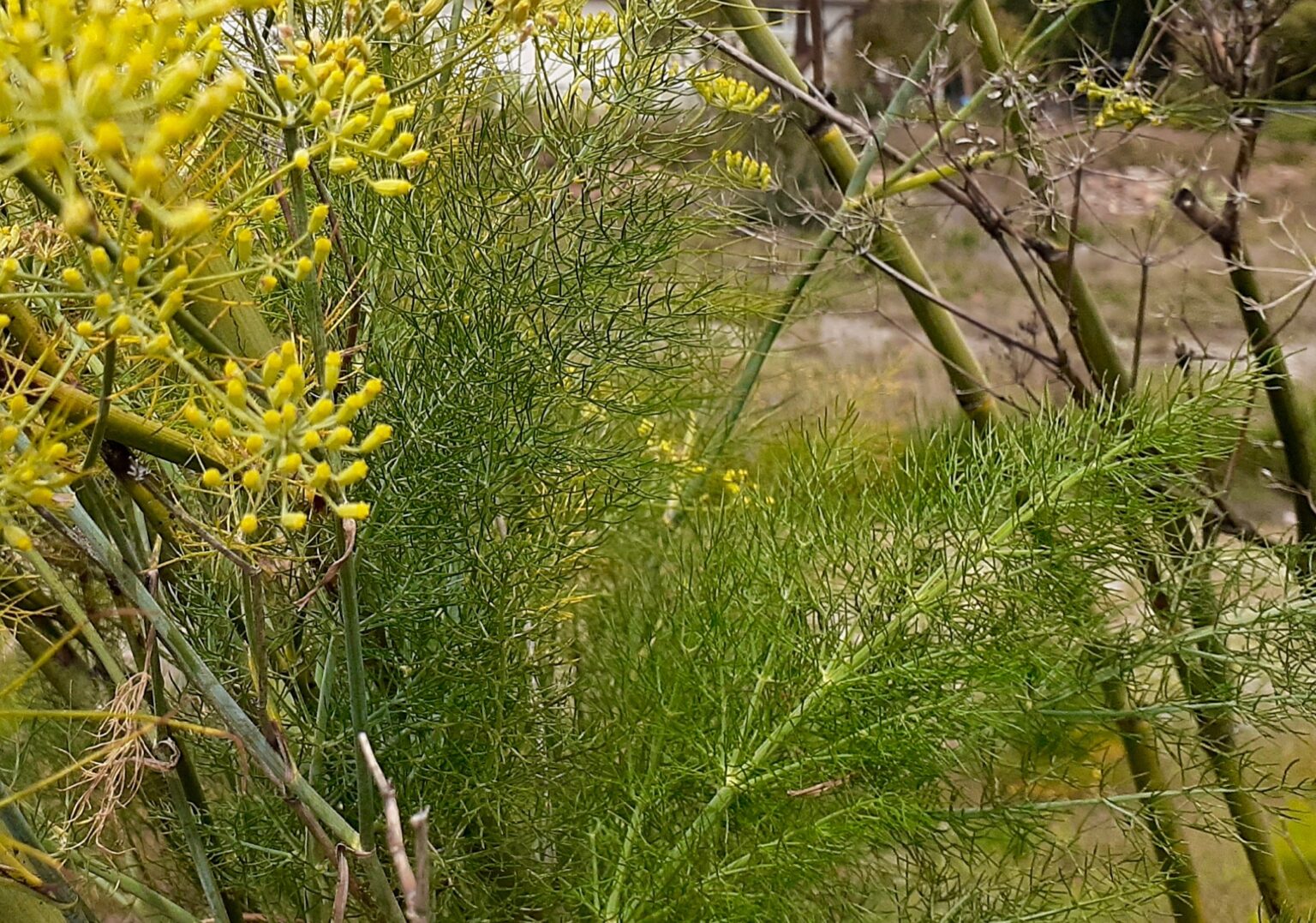
Filaree, red-stemmed (Erodium cicutarium)
This wildly abundant, chewy annual tastes like lemony tissue paper. Young leaves are eaten raw, old leaves lightly cooked or steamed because of their fibrous nature. Roots are commonly chewed as gum. Spring is the best time for tender leaves, but red-stemmed filaree (Erodium cicutarium) can be harvested anytime it is found.
This fleshy annual will grow no more than two inches (five centimeters) tall and six inches (15 centimeters) wide in full sun and little water. In shade and moisture, filaree can grow to 9 inches (23 centimeters) tall and wide. Leaves are small, lacy, and pinnately lobed with a compound arrangement on thin, reddish, hairy stems. Pastel magenta flowers mature into long narrow seedpods that are shaped like the bill of a stork. The plants most resembling filaree are feverfew and tansy (both Tanacetum spp.). The leaves are similar; however, both grow taller than filaree and both have either yellow flowers or white flowers with yellow centers. Recognizing Filaree’s hairy stem is the key to avoiding trouble.
Whether home garden, school playground, or hospital landscape, filaree is plentiful. It indicates walked-on (compacted) and semi-dry conditions. It might also suggest low fertility. While preferring full sun, filaree will flourish in dry shade.
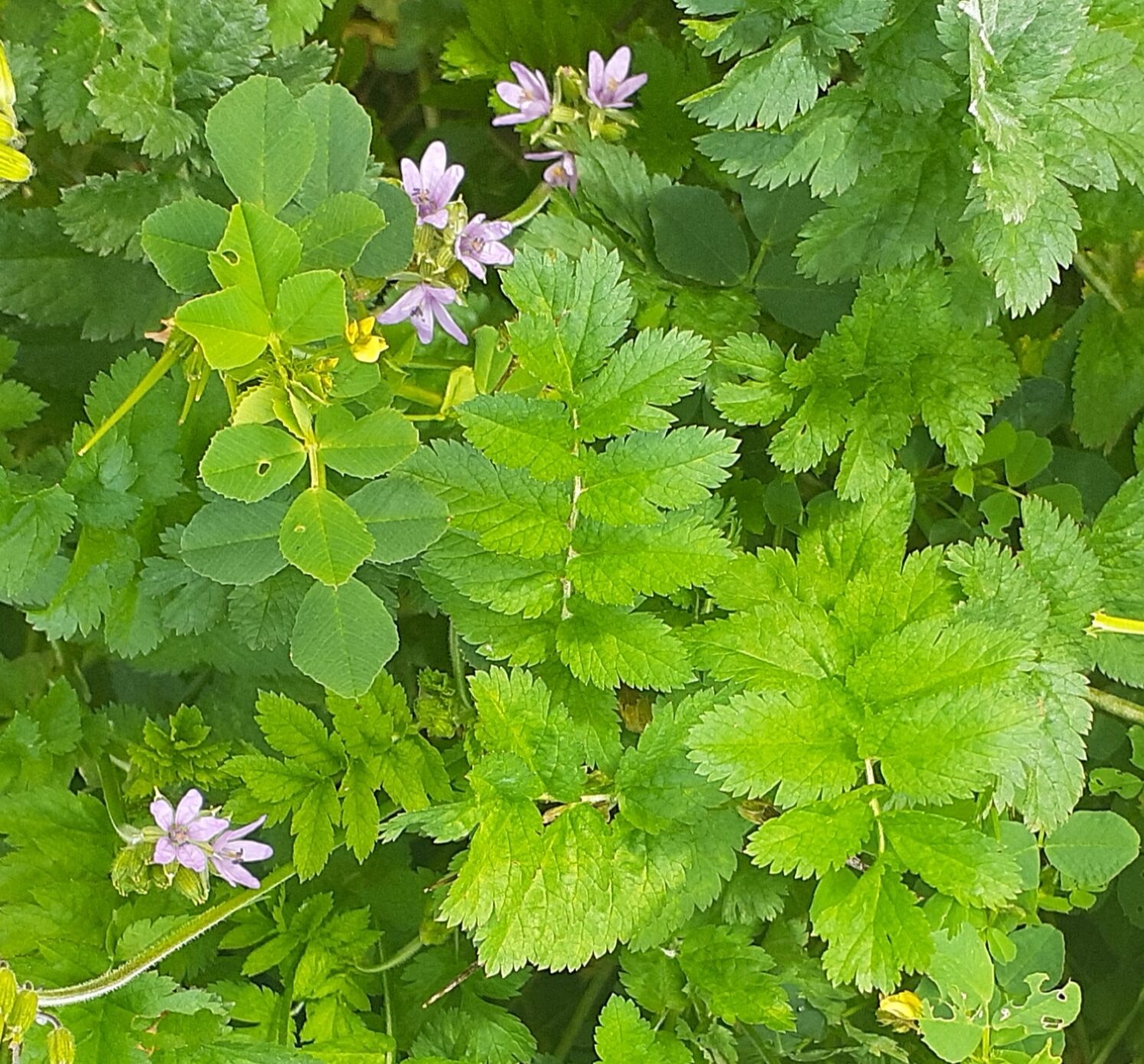
Plantain, common (Plantago major)
Chewy and spinach tasting, this abundant perennial is a staple of foraging. Not only is it highly nutritious, but also fantastic for your skin. The entire plant is edible: flower, leaf, root, seed, and stalk. When young, eat it raw. When older and fibrous, plantain (Plantago major) is a potherb. Spring through early summer are the tastiest times to harvest, but the plant will not go dormant until the first frost.
Leaves emerge from a central clump and then flop over. The plant rarely gets taller than one foot (30 centimeters). Leaves grow between 4 to 12 inches (10 to 30 centimeters) long, and 1 to 5 inches (2.5 to 12.7 centimeters) wide. Its distinguishing attribute is the large veins that run parallel to the leaf stem. Plantain has several edible lookalikes, including the docks and sorrels (Rumex spp.), which generally have longer leaves; wild rhubarb (Rumex hymenosepalus), which has a distinct yellow or red stem and bluish leaf with wavy edges; and yerba mansa (Anemopsis californica), which has a much thicker leaf than plantain and has a bitter fragrance when crushed or torn.
Plantain thrives under a blade. It has evolved to many types of predations. It indicates moist, slightly acidic, and stomped conditions. Look for it in lawns, along trails, and urban canyons. Ever wonder why geese flock to large urban parks? They seek out plants like plantain, dandelion, and dock.
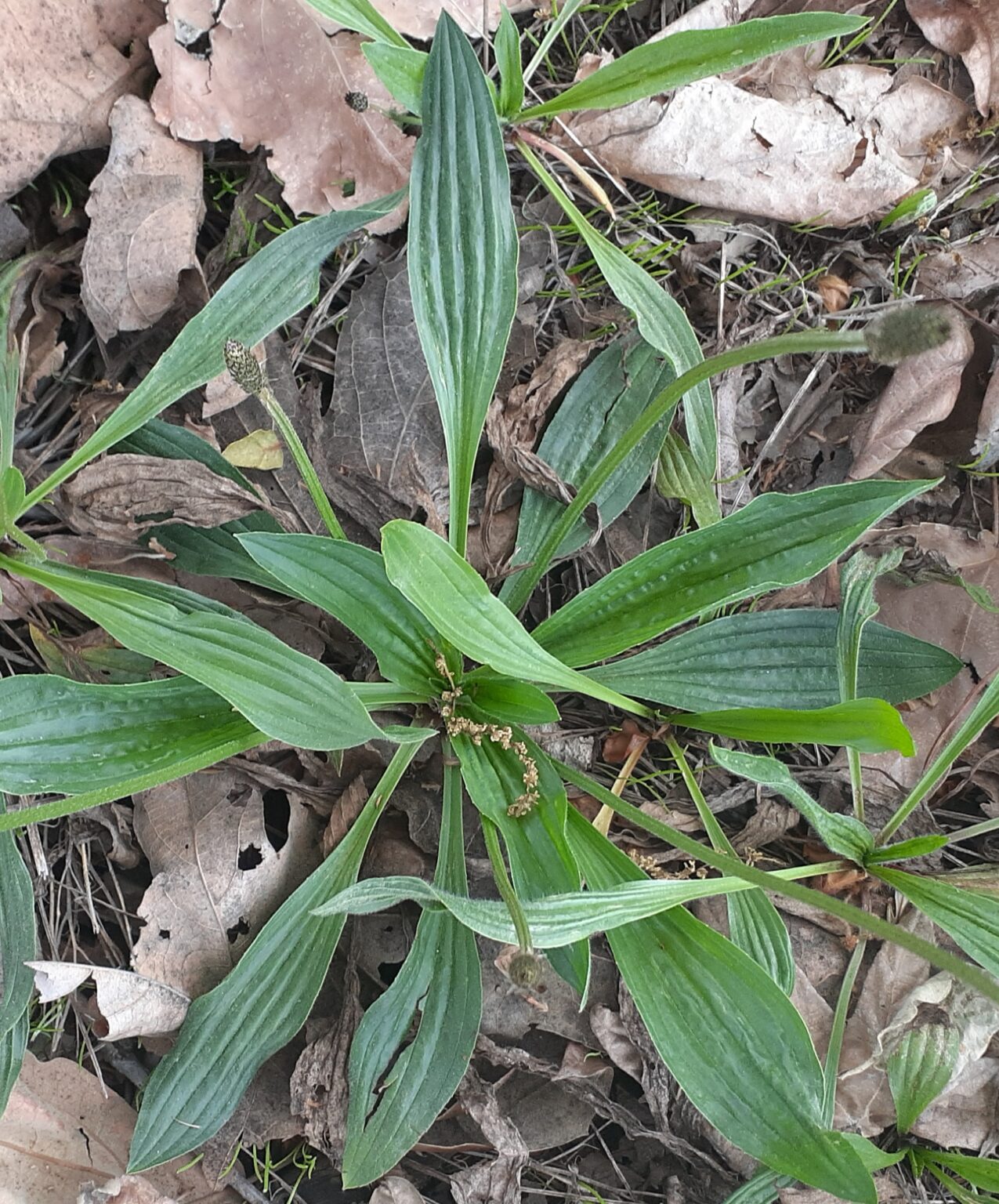
Prickly lettuce (Lactuca serriola)
The origins of butterleaf, iceberg, and Romain lettuces (Lactuca spp.) are growing all around us. When the leaves are young, prickly lettuce (Lactuca serriola) tastes like storebought lettuces and I use them raw. When old and bitter, I lightly boil or cook those parts. Flowers, fruit, and root make tea. All parts are nutritious. Available between January and October.
Prickly leaf edges, bristles on the underside along the midrib, alternate leaf arrangement, and milky sap (latex) are the keys to identifying this annual. Leaves attach directly to stems: no petioles. Interestingly, leaves twist to maximize or reduce sun exposure. Luckily, prickly lettuce resembles other edible plants, mainly their relatives in the sow thistle genus (Sonchus).
Prickly lettuce grows well around humans. It might indicate low fertility, some salts, and coarse soils. Look for it on the margins of a large property, along unkept sidewalks, and around railroad tracks.

Radish, wild (Raphanus sativus)
Wild radish (Raphanus sativus) is delectable. Nearly every part is edible, all infused with that rich radish flavor. Like most members of the crucifer family (Brassicaceae), flower, leaf, stalk, root, and seed are edible and nutritious. My favorite part of this annual/biennial is the fruit (seedpod). It is moist and crunchy and tastes like a salted radish snap. No better way to power through a day.
Rich green leaves and rangy tall pastel flower spikes make this biennial easy to identify. The stalks of wild radish grow one to five feet (0.3 to 1.5 meters) tall and can eventually grow to two feet (0.6 meters) wide. It is in the mustard family and has many of the same attributes. Luckily, the plants that resemble wild radish are also crucifers and just as edible.
Wild radish negotiates urbanized environments well. It might indicate shallow soils that are slightly alkaline. It has a thing for frost-free areas and aquatic influences, whether saltwater or fresh. Look for it in the sunny margins of large properties, along biking trails, and in the areas between this and that.
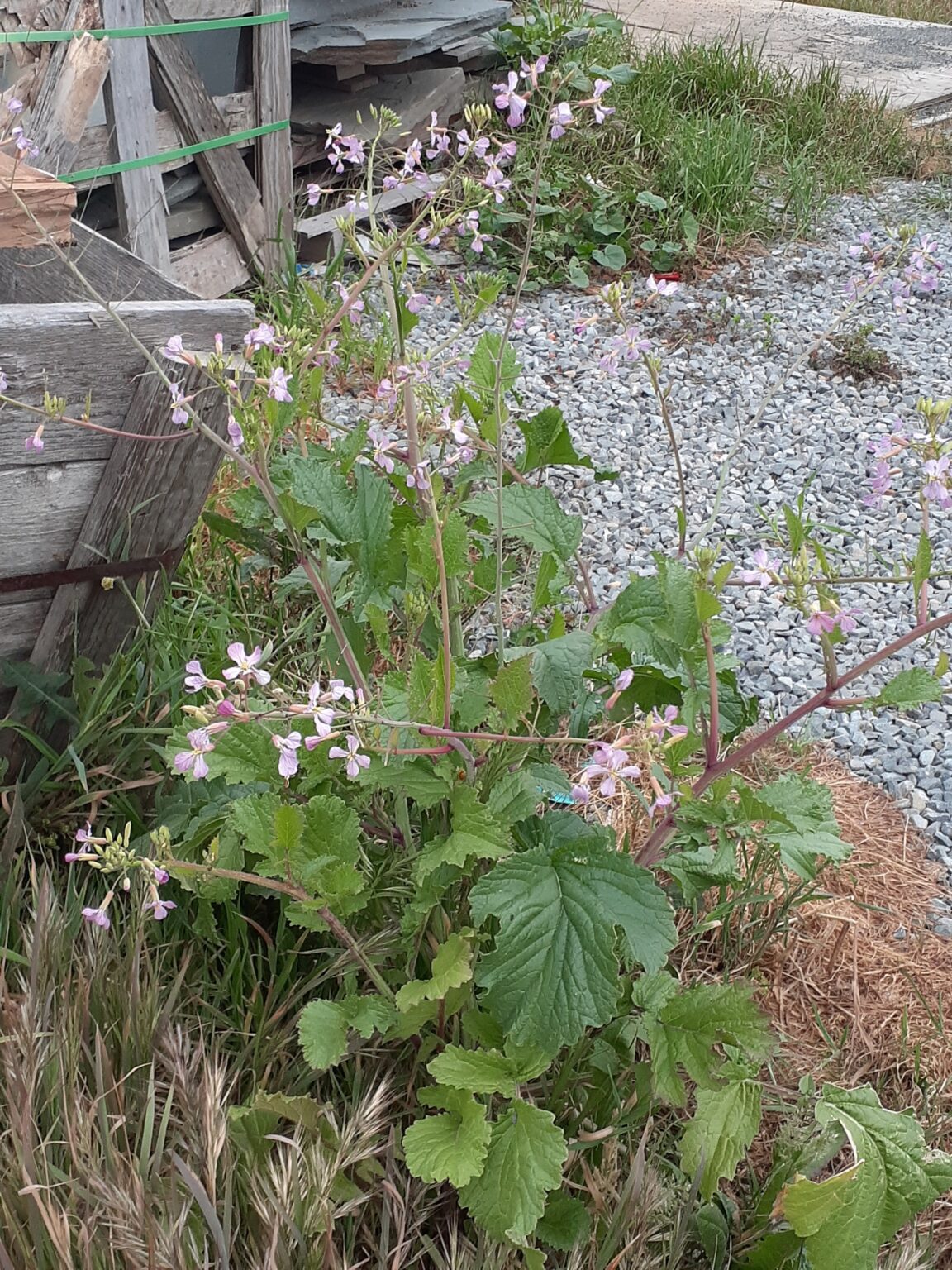
Sow thistle (Sonchus spp.)
When young and tender, the leaves of this abundant annual taste like storebought lettuce. They get bitter with age. Leaves are eaten raw, lightly boiled, or steamed. The root, like dandelion, is roasted and brewed for tea. While available year-round in frost-free areas, January through June are the best times for tender baby greens.
The height of sow thistle (Sonchus spp.) ranges from low growing to over three feet tall (one meter). These quick-growing annuals rarely get more than one foot (30 centimeters) wide. Its most distinguishing characteristics are its hollow stems and milky sap. The leaves are lackluster green, prickly, and have many segments. Leaves are three to eight inches (eight to 20 centimeters) long. There are two plants that look like sow thistle: dandelion (Taraxacum spp.) and prickly lettuce (Lactuca spp.). Both are related and wonderfully nutritious.
There are at least five common sow thistles. All live alongside concrete. They might indicate shallow soils, salts, and carbonates (concrete leachate). Human feet press seeds into the soil. Look for it anywhere on a residential lot, along sidewalks, and at entrances to hiking trails.
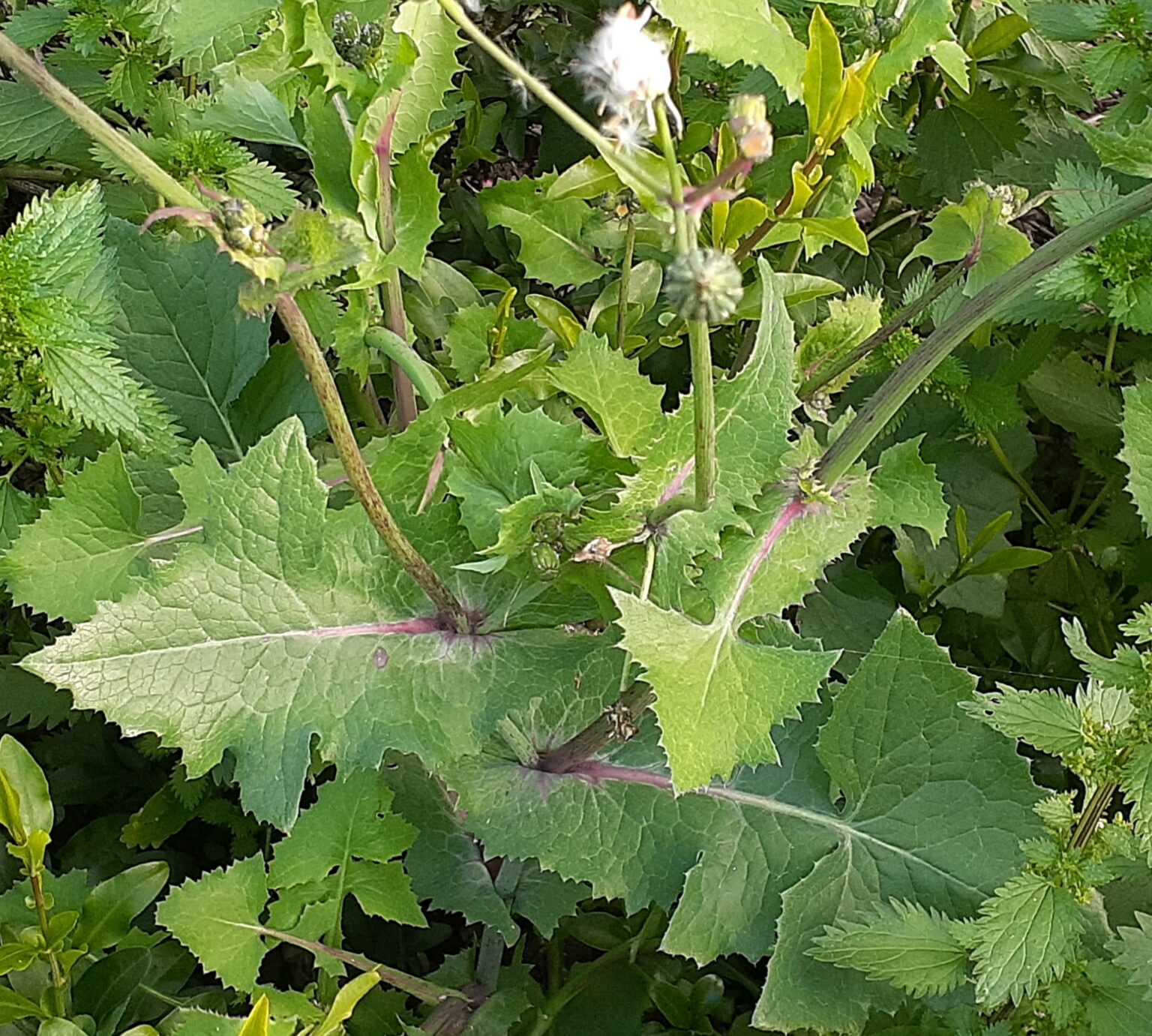
Stinging nettle (Urtica urens)
This persnickety plant is worth the potential pain of harvesting. Stinging nettle (Urtica urens) tastes like warming soil in springtime. Every part is packed with power. The leaf and stalk must be dried, steamed, or cooked to deactivate their stinging mechanisms. My favorite use for this plant is a strong midafternoon tea made from the leaves when I need fortification and strengthening. This annual and sometimes perennial is foraged January through August.
Stinging nettle grows from four to 24 inches (10 to 61 centimeters) tall on single or multibranched stems. Oblong or spear-like, the leaf is distinct with its serrated edges, which resemble piranha teeth. Leaves are 0.75 to two inches (two to five centimeters) long. Stinging nettle is erect branching and gets semiwoody. Luckily, the weeds that look most like stinging nettle are edible. These include goosefoot (Chenopodium spp.), hairy beggarticks (Bidens pilosa), and trailing mallow (several genera).
Stinging nettle is likely to be found in lightly shaded urban areas with dry and deep soil. They often grow under allelopathic trees, such as black walnut (Juglans spp.) and Eucalyptus. Look for them in mature gardens, the untended areas of a sprinkler, and shaded canyons.
Wear gloves, long sleeves, and pants that protect ankles when harvesting this plant. Its sting is not to be trifled with.
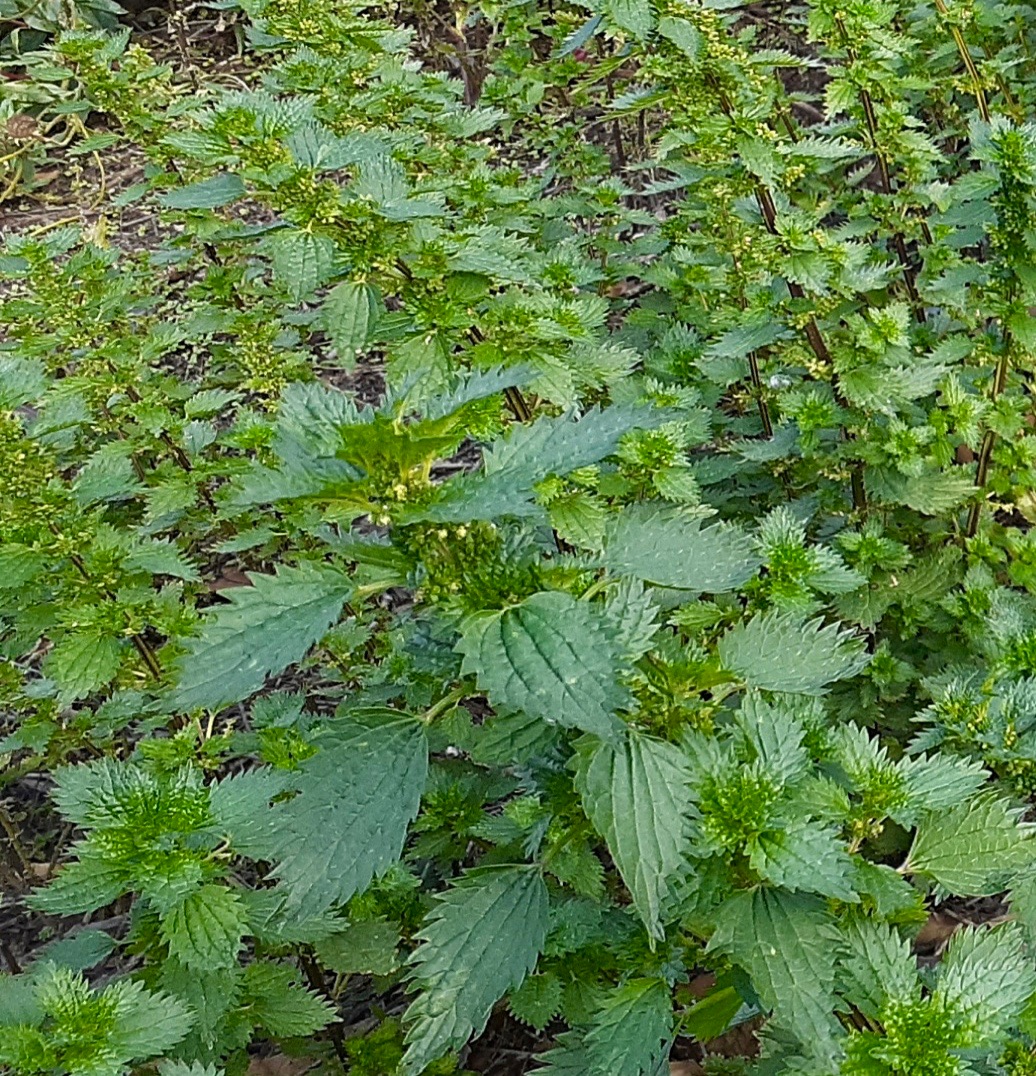
There are far more spontaneous foods
Other beneficial and edible weeds that might be found in a home garden include any mustard (Brassica spp.), shepherd’s purse (Capsella bursa-pastoris), goosefoot and lamb’s quarters (Chenopodium spp.), chicory (Cichorium intybus), cat’s ear (Hypochaeris spp.), peppergrass (Lepidium spp.), sourgrass (Oxalis pes-caprae), purslane (Portulaca oleracea), dandelion (Taraxacum spp.), and thistle (many genera).
Disclaimer: Pacific Horticulture presents these foraging articles for information purposes only. Pacific Horticulture does not encourage or endorse wild foraging without proper training and/or supervision of an expert.
Those who intend to forage in the wild assume all responsibility and liability inherent in such pursuits. Pacific Horticulture cannot be held liable for any misidentification, adverse reaction, or other unforeseen outcome from the act of wild foraging.
We want to emphasize that this article is not a field guide. Our article and images are not intended to be a scientific representation of specific plants for the purposes of identification for eating. Please contact an expert forager before consuming anything found in the wild.
Resources
Clarke, Charlotte Bringle. 1977. Edible and Useful Plants of California. University of California Press.
Elpel, Thomas J. 2013. Botany in a Day: The Patterns Method of Plant Identification, 6th ed. HOPS Press, LLC.
Jeavons, John. 2012. How to Grow More Vegetables: (and Fruits, Nuts, Berries, Grains, and Other Crops) Than You Ever Thought Possible on Less Land Than You Can Imagine. 8th ed. Ten Speed Press.
Jordan, Deane. 2023. Eat the Weeds: A Forager’s Guide to Identifying and Harvesting 274 Wild Foods. Adventure Publication.
Kent, Douglas. 2020. Foraging Southern California: 118 Nutritious, Tasty, and Abundant Food Wilderness Press.
Lowry, Judith Larner. 2014. California Foraging: 120 Wild and Flavorful Edibles from Evergreen Huckleberries to Wild Ginger. Timber Press.
The phrase “spontaneous foods” was adapted from a spring 2012 article by Izabela Riano in Scenario 02: Performance: “Just A Bunch Of Weeds: An Interview With Peter Del Tredici.”
Pouyat, Richard V., Katalin Szlavecz, Ian D. Yesilonis, Peter M. Groffman, and Kirsten Schwarz. 2010. “Chemical, physical and biological characteristics of urban soils. Chapter 7.” In: Urban Ecosystem Ecology, edited by Jaqueline Aitkenhead-Peterson and Astrid Volder, 119–152. American Society of Agronomy, Crop Science Society of America, Soil Science Society of America.
Zigas, Eli. 2011. “Is City Soil Really More Toxic Than Rural Soil?” SPUR. September 14, 2011.





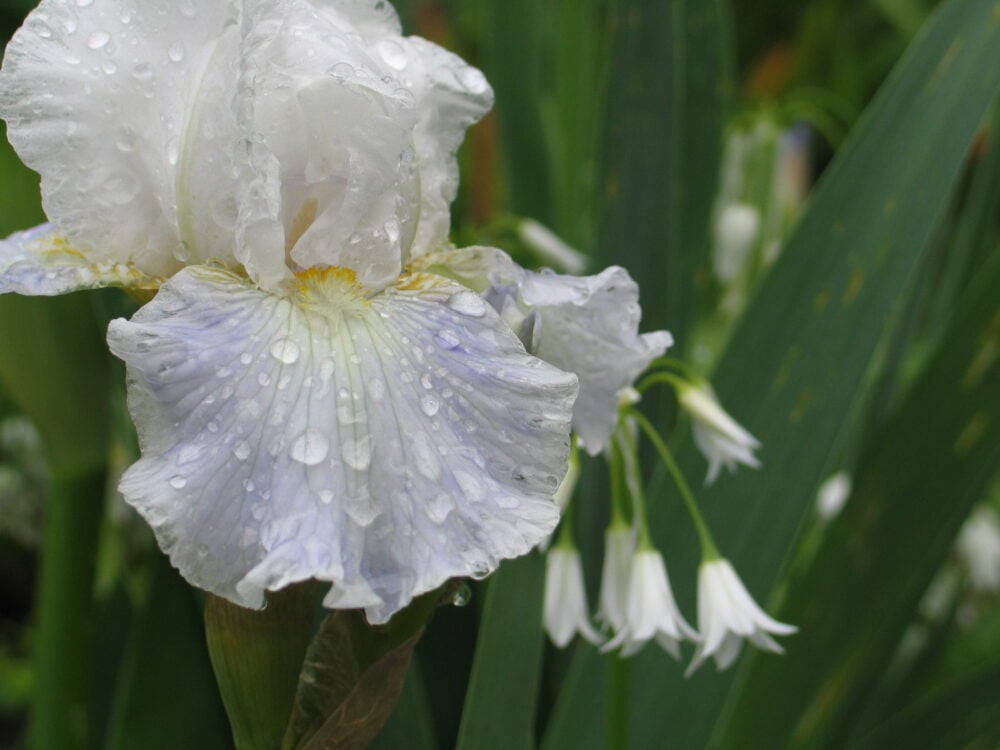
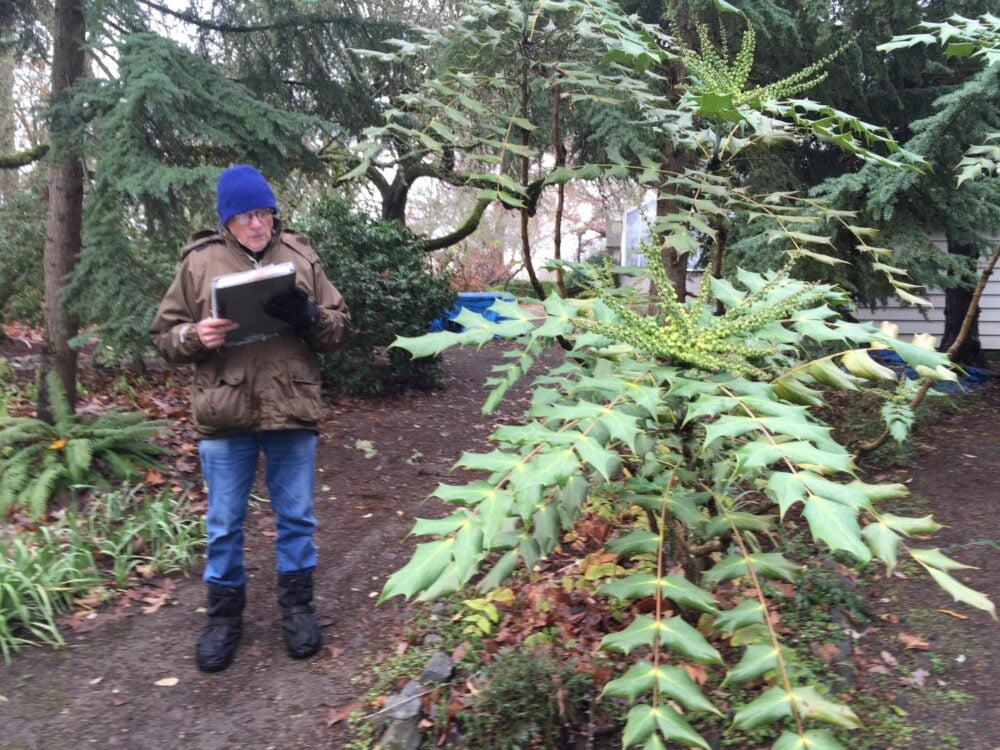
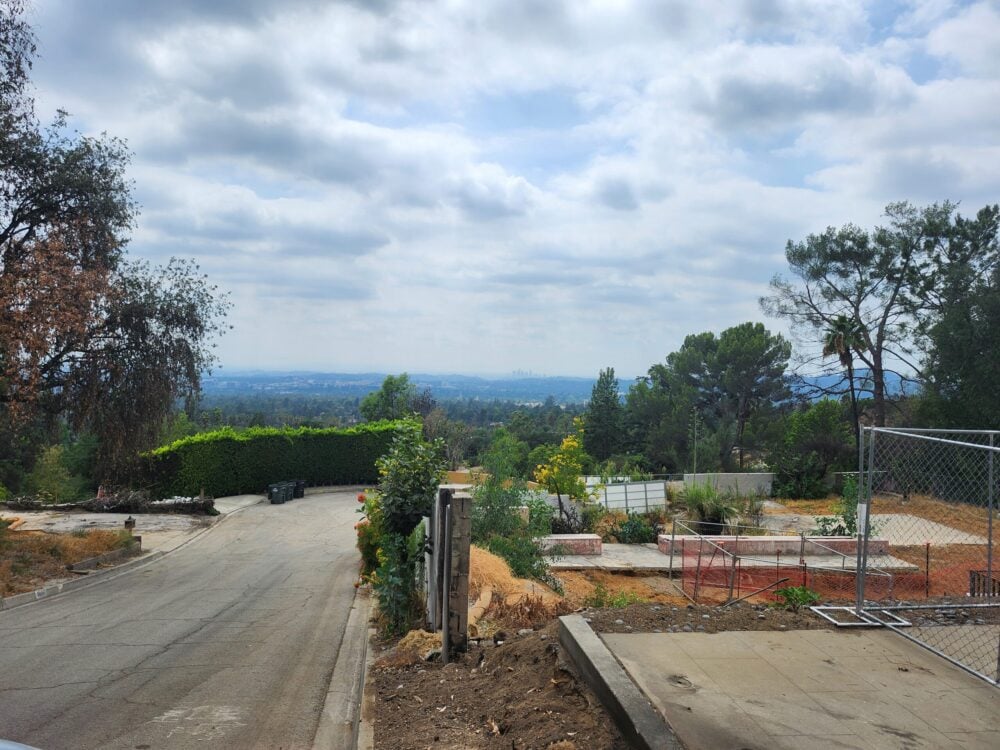


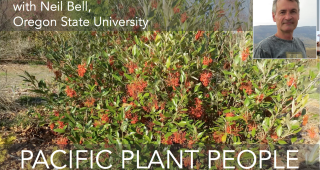
Responses